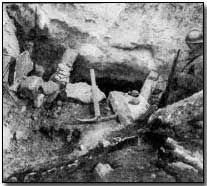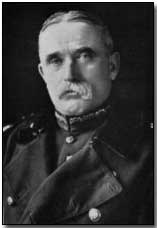Battles - The First Battle of the Aisne, 1914
 The First Battle of the Aisne was a follow-up offensive by the Allied forces against
the right wing of the German First and Second armies (under
von Kluck and
von Bulow) in retreat after September 1914's
First Battle of the Marne.
The offensive began on the evening of 12 September in the aftermath of a
rather belated pursuit of the Germans.
The First Battle of the Aisne was a follow-up offensive by the Allied forces against
the right wing of the German First and Second armies (under
von Kluck and
von Bulow) in retreat after September 1914's
First Battle of the Marne.
The offensive began on the evening of 12 September in the aftermath of a
rather belated pursuit of the Germans.
It has been argued that the Allies would have made far greater gains had their success at the Marne been promptly exploited in a rapid and continued attack upon the retreating German First and Second armies. As it was, the progress of the Allied forces, British and French, was slow, owing to fatigue and to caution. Nevertheless the Allies realised on 11 September that the Germans intended to halt their retreat at the Aisne.
Consequently the two German armies, joined by the new Seventh Army (under von Heeringen), were able to entrench themselves along the north bank of the River Aisne. The Chemin des Dames Ridge provided a long and admirable defensive position from which to conduct their defence.
 The
French Fifth and Sixth Armies (under d'Esperey and Maunoury), aided by the
British Expeditionary Force (BEF, under Sir John French),
launched a frontal infantry assault upon the Germans' defensive positions
across the river at the Aisne upon their arrival on 13 September.
The
French Fifth and Sixth Armies (under d'Esperey and Maunoury), aided by the
British Expeditionary Force (BEF, under Sir John French),
launched a frontal infantry assault upon the Germans' defensive positions
across the river at the Aisne upon their arrival on 13 September.
Having established a bridgehead north of the river on 14 September, the Allies continued to assault the Germans on the plateau above them; German counter-attacks were in place within hours however, forcing the Allies back.
Once again the German forces demonstrated the present superiority of defensive warfare over its offensive counterpart, deploying machine gun fire and heavy artillery in the defence of their positions. Small advances were achieved by the Allies, but these could not be consolidated.
Already scaled back by the Allies on 18 September, fighting was abandoned on 28 September once it finally became clear that neither side, in particular the Allies, would be able to mount frontal attacks upon the well-entrenched positions of the enemy. Additionally, the French were finding themselves under increased pressure at Reims.
Instead, both forces attempted to manoeuvre past the other in a northwards movement, in the so-called 'race to the sea', begun by French Commander-in-Chief Joseph Joffre, moving his forces north-west so as to attack the exposed German right flank at Noyon (the First Battle of Albert).
Two further battles took place at the Aisne, during April-May 1917 (the Second Battle of the Aisne), and May-June 1918 (the Third Battle of the Aisne).
To view maps charting the progress of the Marne battle click here; here; here; here and here. Click here to view a map of the subsequent German retreat.
Photographs courtesy of Photos of the Great War website
Bulgaria mobilised a quarter of its male population during WW1, 650,000 troops in total.
- Did you know?
